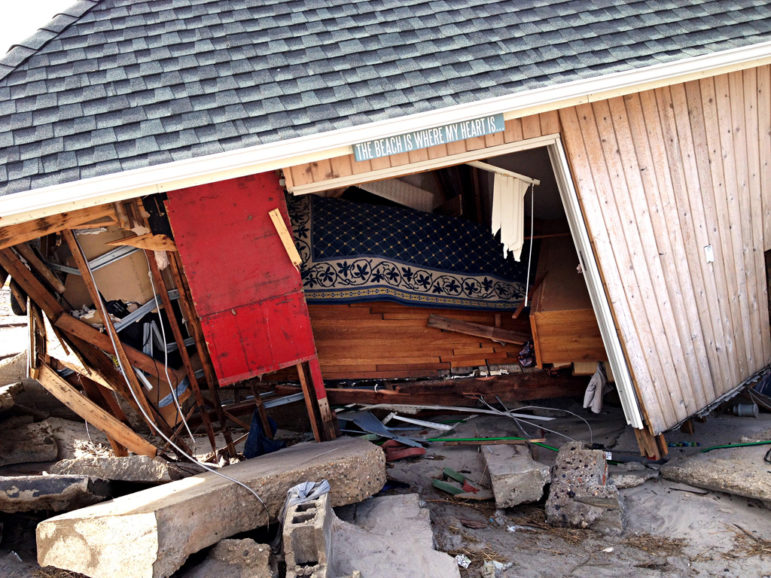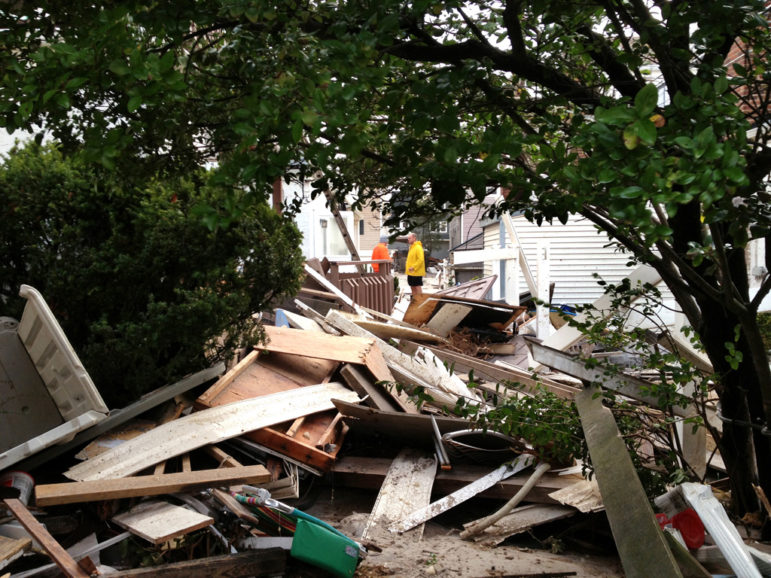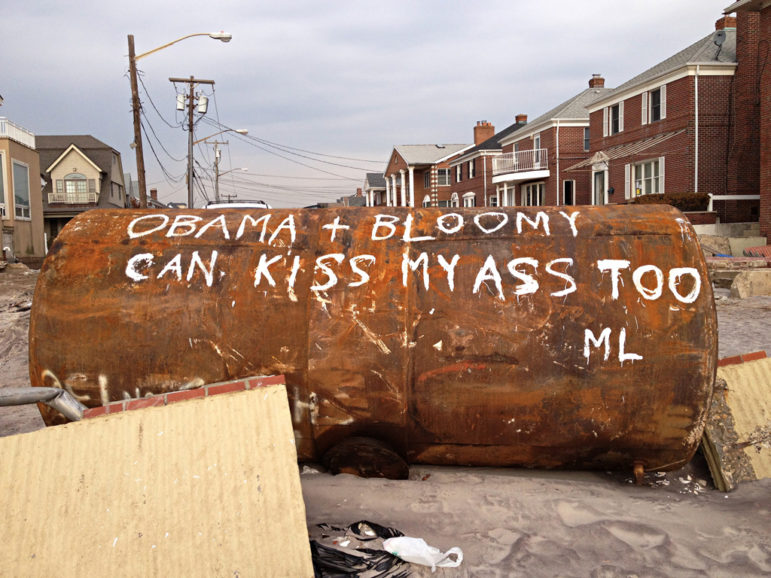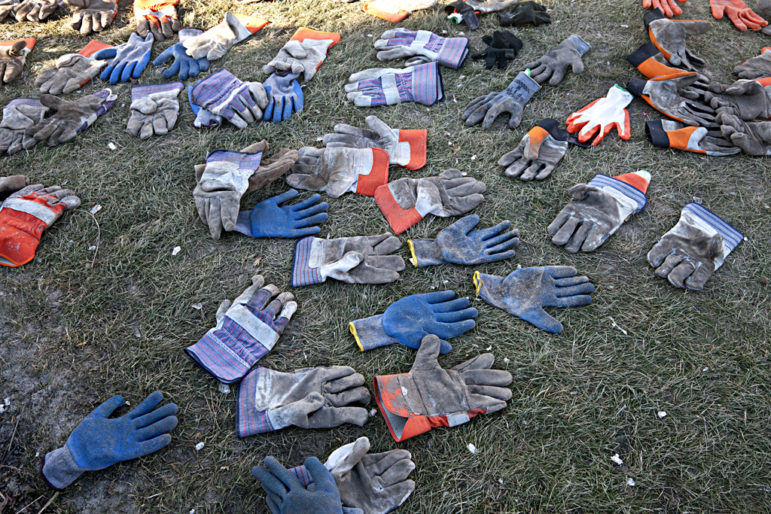Retired HPD photographer Larry Racioppo spent months without electricity after Hurricane Sandy rebuilding his Rockaway Park home. His photos from that time, and of his neighborhood over the decade since, are the subject of an exhibit on display this month at the Rockaway Initiative for Sustainability and Equity (RISE) in Far Rockaway.

Larry Racioppo
A damaged house on Beach 131st Street a week after Hurricane Sandy in 2012.
It started with hard rain. Then the basement windows blew in.
That’s how Larry Racioppo, a retired photographer with the city’s lead housing agency, remembers the early hours of Hurricane Sandy, which struck New York a decade ago Saturday, devastating the five boroughs and killing 44 people.
Racioppo and his wife had prepared their Rockaway Beach home for the storm the best they could, moving valuables out of the basement and taking everything off the deck and indoors. Like many New Yorkers, they’d opted to stay put during Sandy: a year before, there had been similar evacuation warnings ahead of Hurricane Irene, and the actual impact from that storm was far less than predicted. “Nothing happened,” Racioppo said.
But when Sandy hit, the water in his basement had soon risen above the electrical outlets. “I got a mop stick and turned off the main breakers,” Racioppo recalled. “About 20 minutes later, all the lights went out in Rockaway.”

Larry Racioppo
The view from Beach 130th Street in the Rockaways on Oct. 30, 2012.
Racioppo, who spent 20 years taking photographs for the city’s Department of Housing, Preservation and Development (HPD)—documenting violations, squatters, ribbon cuttings, before-and-after shots of vacant lots turned into homes—spent the next few months living without electricity, working with his neighbors to rebuild their beachfront community.
His photos from that time, and of his neighborhood over the decade since, are the subject of an exhibit on display this month at the Rockaway Initiative for Sustainability and Equity (RISE) in Far Rockaway. “Larry’s Sandy Diary,” supported by Queens Council on the Arts, is open through Nov. 19 and includes more than 70 prints depicting scenes of the storm’s aftermath and recovery process.

Larry Racioppo
The view from Racioppo’s home the morning after Sandy hit.
It includes the view from Racioppo’s home the day after the storm, the sand pathway leading away from his house completely obstructed by broken wood boards, discarded beach chairs and other debris. There was “just wreckage everywhere,” Racioppo remembers. For the next several months, he and his wife lived without power, cooking meals on their gas stovetop and using their fireplace to warm the house.

Larry Racioppo
City recovery crews building dunes along the Rockaway waterfront in July 2013, an effort to buffer the neighborhood from future floods.
“You got up with the sun. You worked all day. You had a little bit to eat, there was no entertainment, no internet. And you went to bed,” Racioppo said of those weeks in the immediate aftermath of the storm. Each day, he would walk his dog and a small wagon with two five-gallon canisters to the nearby gas station, to get enough fuel for the generator to power that day’s construction work.

Larry Racioppo
A discarded storage tank in Rockaway Park during Sandy’s aftermath.
“After a while with generators on, you don’t realize the sound until you turn it off. And then you hear this quiet,” Racioppo said, recalling the profound quiet in the evenings. “People were turning generators off all around the same time in the neighborhood. So it was like this background noise you didn’t hear, and then when you turned it off, you were like, ‘ahh.’”
Fresh in his memory too, even a decade later, was the sense of community that emerged in the storm’s aftermath: The local church had set up a space to give out clothing, radiators and other donated goods, and different food trucks would come to offer free meals to neighbors and recovery workers. In one of Racioppo’s photos, dozens of discarded work gloves dot a lawn, leftover by volunteers.
“So many people came and volunteered…people would knock on the door, ‘Do you need anything?’” he said. “People just step up in an emergency.”

Larry Racioppo
Volunteers’ gloves, scattered on the grass along Beach 130th Street.
Larry Racioppo’s “Sandy Diary,” will be on exhibit through Nov. 19 at the RISE, 58-03 Rockaway Beach Boulevard, Far Rockaway. Operating hours are Monday through Friday, 10 a.m. to 6 p.m.
More Hurricane Sandy anniversary coverage:
Buy-In for Buyouts: 10 Years After Sandy, New York Considers New Funding for Voluntary Relocation
Spared By Sandy, Hunts Point Food Market Slow to Address Flood Risk
NYC is Underspending on Climate Resiliency: Comptroller
City Limits’ series on the people, places and politics of New York City’s five-borough art scene is supported by the Laurie M. Tisch Illumination Fund.








